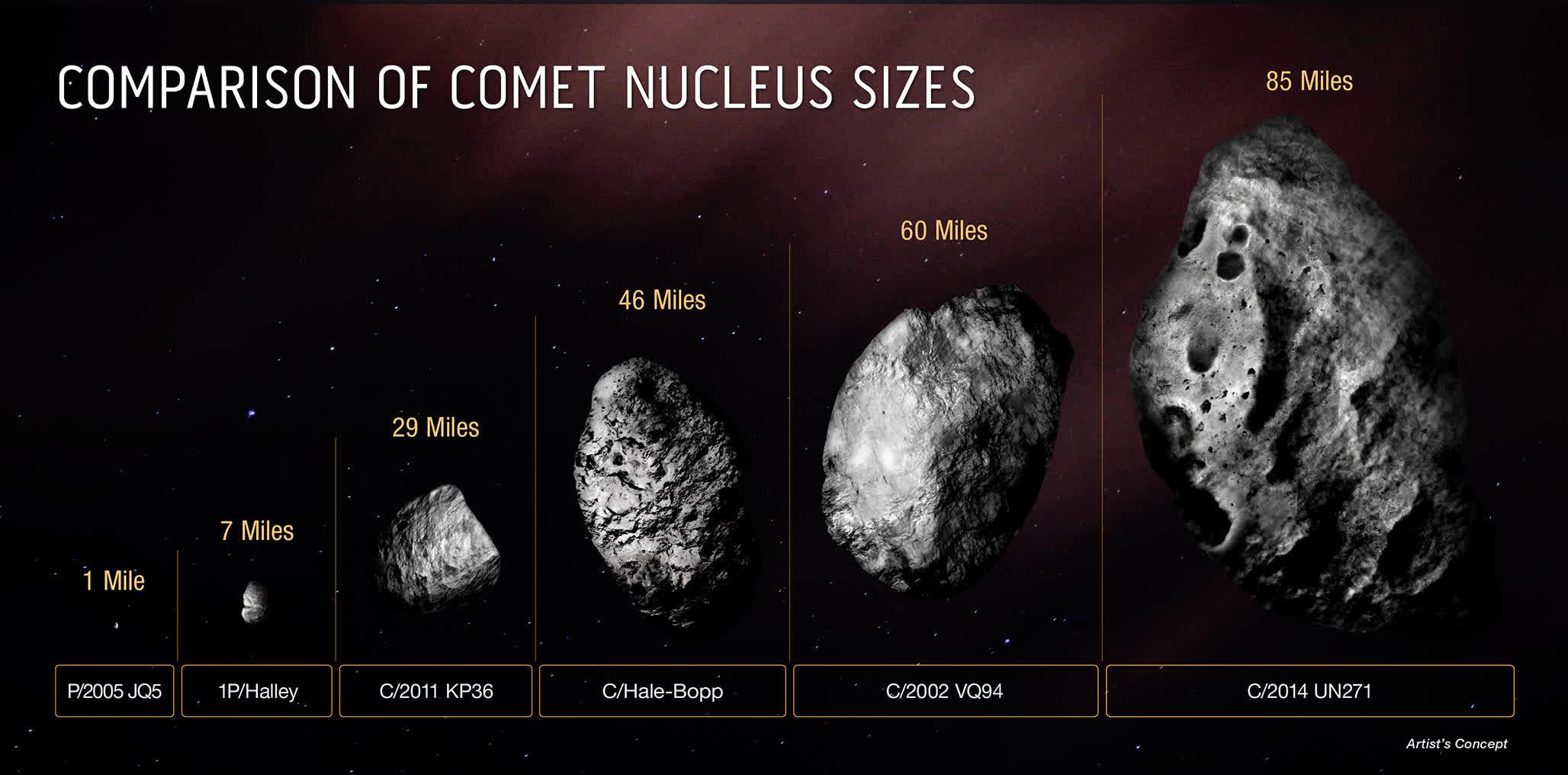

NASA's Hubble Space Telescope confirms largest comet nucleus ever observed | Tec...
source link: https://www.techspot.com/news/94168-nasa-hubble-space-telescope-confirms-largest-comet-nucleus.html
Go to the source link to view the article. You can view the picture content, updated content and better typesetting reading experience. If the link is broken, please click the button below to view the snapshot at that time.

NASA's Hubble Space Telescope confirms largest comet nucleus ever observed
The comet is too far away to post any risk to Earth
By Shawn Knight April 12, 2022, 1:40 PMIn a nutshell: Comet C/2014 UN271 was first discovered by Pedro Bernardinelli and Gary Bernstein in archival images taken from the Dark Energy Survey at the Cerro Tololo Inter-American Observatory in Chile. Astronomers suspected it must be pretty big given its brightness at such a large distance, and now they have a much better estimate thanks to Hubble.
The comet is still too far away for its solid nucleus to be visually resolved by Hubble, so astronomers had to make a computer model of the surrounding coma and adjust it to fit Hubble's images. Then, the coma was subtracted, leaving behind the starlike nucleus.

The data was then compared to earlier observations from the Atacama Large Millimeter/submillimeter Array (ALMA) in Chile.
All data considered, it is believed the icy comet has a nucleus measuring approximately 80 miles across. That's roughly 50 times larger than the nucleus of most known comets. The object's mass is also estimated to be 500 trillion tons, or a hundred thousand times greater than the mass of a typical comet found closer to the Sun.
The earliest known precovery image of the comet dates to November 2010 when it was three billion miles away from the Sun. Precovery, or pre-discovery recovery, involves looking for an object in earlier photos before it was officially discovered. Often, this provides a better understanding of an object's orbit.
Fortunately, the comet poses no risk even as it is traveling around 22,000 miles per hour from the edge of our solar system. Astronomers estimate it will never get closer than a billion miles away from the Sun, or a little more than the distance of Saturn from the Sun.
Image credit Vittorio Staffolani
Recommend
About Joyk
Aggregate valuable and interesting links.
Joyk means Joy of geeK